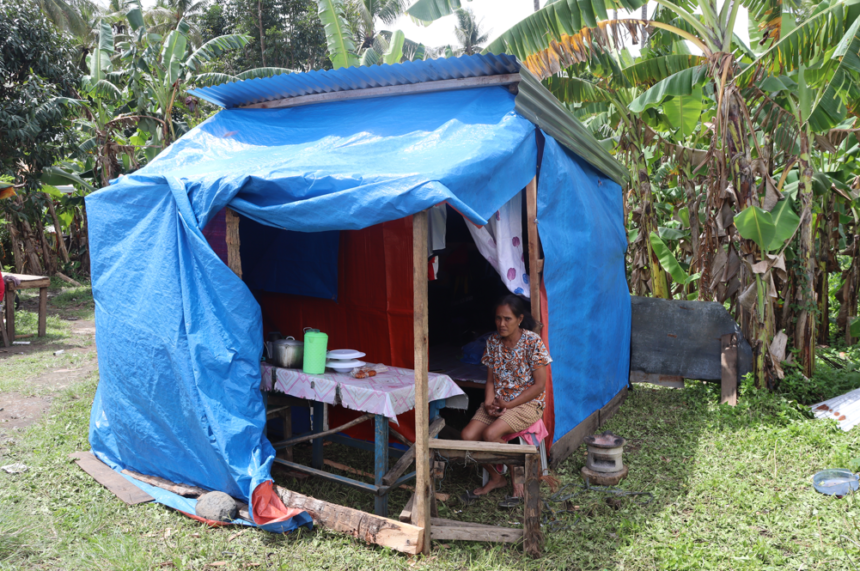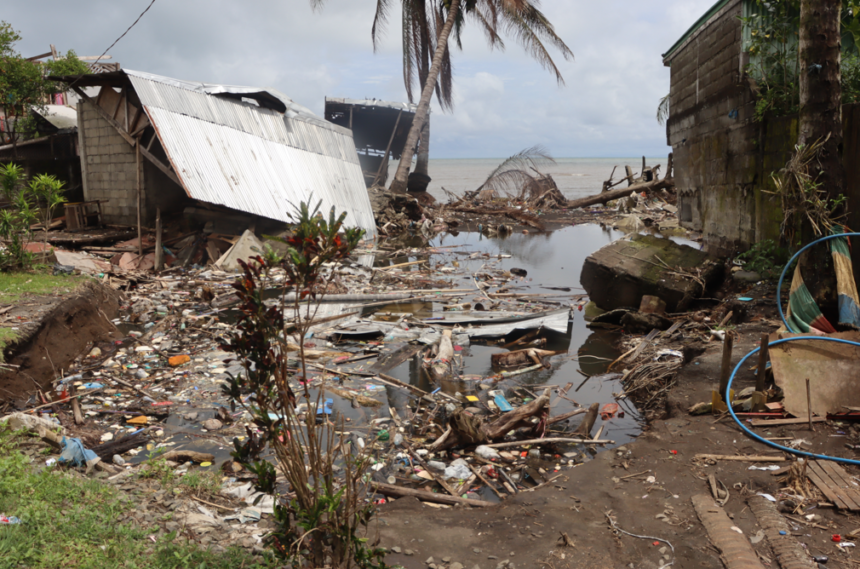“I saw our house being swept away by the floods. Not even a piece of wood was left,” recounted Helen, a 54 year-old widow, and a mother of four.
The house where she lived and the house of her eldest child’s family were washed away by the rushing floods the morning after Christmas day. What she thought of having a quiet breakfast that morning became a horrifying tale of witnessing their home getting destroyed and washed away into the ocean by the angry flood waters as they desperately evacuated to their relative’s house a few meters away.
Days before Christmas, moderate to heavy rains were already experienced in their province and in the whole region of Northern Mindanao. Helen is used to the flooding since the previous years have witnessed several parts of their village, including the part where they lived, getting submerged in floods whenever it rains for two to three days. What they did not expect was the rushing flood waters which they have never experienced for as long as she can remember while residing in Barangay Taboc Sur — until that fateful day.
A few minutes before Helen’s nightmare took place, she and her family had just evacuated their then slowly collapsing house made entirely of wood to seek shelter in a relative’s concrete house. It was around 7 o’clock in the morning of December 26, 2022 when the sudden rise and rush of flood waters ravaged their and several others’ homes.
“I have brought only my nebulizer when the flood waters came rushing into our homes, destroying our houses,” said the sickly and asthmatic Helen, recalling how they passed through waist-deep flood waters while fleeing. “My family and I were soaking wet because of the rain and flood waters all day long,” she added. Able to grab only a few things — clothes not included — when they evacuated, a change of dry and warm clothing was not possible even until the following day.

For more than a month, Helen, her children, and grandchildren stayed at a relative’s house. With almost nothing left from their house, the local government unit (LGU) and a few organizations gave them assistance such as kitchenware, hygiene kits, sleeping mats, and other basic housewares which were only given to those who totally lost their houses. It was only recently when Helen and her family started building a temporary shelter made of wood posts, plastic sheet walls, and G.I. sheet roof which she bought with support from her low-wage earning children.
Still grateful for the life she has with her family despite the tragedy, Helen remarked, “We lost our house and other belongings, but what’s important is we are safe now.” She wishes for nothing grand — only to be able to make ends meet. With her frail health condition, she despairingly dreams for her two children to finish their studies.
To assist Helen’s family and other affected families in Barangay Taboc Sur, Oroquieta City, CDRC, in partnership with the Iglesia Filipina Independiente (IFI) and support from the Diakonie Katastrophenhilfe (DKH), implemented an Emergency Response and provided food packs to 350 families in their barangay. Along with other families served, Helen was grateful of the assistance received and expressed in relief that it would lessen her daily worries. She hopes for a more sustainable and self-reliant means of livelihood for her and her family’s needs, especially now that they are slowly rebuilding their home from scratch.
Having experienced the tragedy of losing their homes and risking their lives in the raging flood waters, Helen, along with many other families in their community, learned a lesson the hard way. According to her, lack of preparedness will cost lives and her harrowing experience frightened her. She vows to be ‘disaster-prepared’ and more vigilant especially during typhoons and rainy seasons.
“This way I can protect my loved ones and also our community,” Helen concluded.

